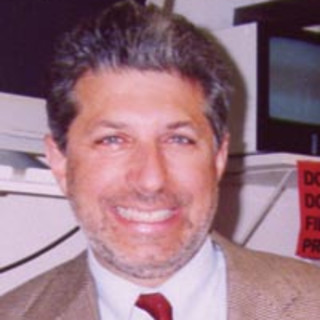For over a decade, Stanford University has organized and sponsored an incredible meeting of entrepreneurs, scientists, clinicians, and industry leaders together in a forum the day before the official opening of Heart Rhythm’s Scientific Session. The meeting is organized by Stanford University Faculty and led by the forum’s creator, Dr. Paul Wang. There are no industry sponsors, and all costs are carried by the attendee (this year, it was free due to its virtual nature during the pandemic) and Stanford University. The meeting was always in person except for the past two years due to COVID-19, and as a regular faculty member, I miss the early AM breakfast, the socializing, their great lunch (and more networking), and their post-meeting cocktail hour. The meeting packs a lot in during a full day, with sessions organized into categories of ablation, devices, basic science, and start-up companies (and area that the meeting calls “Speed Dating”). For a large-scale virtual meeting, Stanford and Dr. Wang pulled this full-day meeting off without a glitch. The following was written during and shortly after the meeting to give the reader a flavor for this dynamic meeting. It also features the “hot topics” featured during this presentation!
The five-minute topic talks were all pre-recorded. However, each session was followed by a live questions and answers session. The questions came from either the audience through a link or by the moderator, and they often contained the key take-home points of the presentation.
The meeting kicked off on July 27th with the typical introductions by Dr. Paul Wang and other Stanford Colleagues. It consisted of many rapid-paced recorded talks with approximately 900 enrollees and approximately 300 participants at any given time according to Dr. Wang. The participants, typically innovators and entrepreneurs, academics, trainees, clinical doctors, and industry folks that are all working to improve on the treatment of cardiac arrhythmias, were engaged and many questions were asked and answered by the presenters and panelists. In typical format, the presentations were short and sweet and to the point, and discussions followed the completion of the series of related talks. Here are some of my notes from the morning session (so as not to overwhelm the reader on the vast range of topics and comprehensive nature of this meeting) and featured speakers during the presentation. You will see that the hot topics during this meeting were pulse-field ablation to treat atrial fibrillation, the many start-up companies working on breakthroughs in the field of ablation and devices, and several implantable devices that are either leadless and/or used to prevent stroke.
Dr. Riccardo Cappato presented “Lessons Learned from Clinical Trials and Registries on Atrial Fibrillation Ablation.” Surprisingly, he reported that the one-year success of cardiac ablation using the standard tools for paroxysmal atrial fibrillation was only 68 percent after reviewing a series of multi-center trials. This was primarily with pulmonary vein isolation as the primary approach. Nonthermal extrapolation ablation is the hottest electrophysiology topic and is billed as the second coming of cardiac ablation. This cutting-edge news was discussed by Dr. Kars Neven. This novel therapy has tissue specificity to cardiac myocytes. He reviewed the state-of-the-art in general and discussed how this breakthrough therapy spares the esophagus and phrenic nerve and does not require contact force sensing. It can be delivered using monophasic or biphasic waveforms. Multiple different manufactured systems are being investigated. It is also called “pulse-field ablation.” The reader should note that this topic was covered in many areas throughout this meeting and later in the afternoon, including the “Speed Dating” sessions, which featured several pulse-field ablation companies with clinical trials in the US and elsewhere under investigation.
In this first session, however, Dr. Anti Anic discussed the Centauri system, manufactured by Galaxy Medical, and the “Eclipse AF study.” He showed how it looks in the lab, which is very similar to standard atrial fibrillation ablation systems. Lesion tagging is not automatic. The safety in 50 subjects was presented, and 27 of them had paroxysmal atrial fibrillation. Most received conscious sedation, and the procedure took on average about one hour for a complete atrial fibrillation ablation procedure. Safety seemed quite good in this early series with no phrenic nerve injury, no ST-segment elevation, and no adverse neurologic events. Two patients out of 46 had endoscopy procedures post-procedure, which demonstrated superficial esophageal lesions (however). The latter was an area that I thought would not be affected by this novel therapy, and more data is needed to understand whether it truly spares the esophagus. No gaseous emboli occurred, and 98% of these patients at a six-month follow-up had complete pulmonary venous isolation. Dr. Pierre Jais described the Bordeaux experience with electroporation in monopolar and bipolar mode and biphasic mode. Farapulse method showed 96% durability, and he stated that his system spares damage to the esophagus in general. The left atrial function is preserved by his data. He showed many different technology catheters. No pulmonary vein stenosis or contralateral damage was reported by him.
Dr. Mark La Meir discussed Hybrid Ventricular Tachycardia ablation in Brussels and their experience. It is a combined surgical and percutaneous approach integrating an epicardial thoracoscopic approach with an endocardial catheter ablation approach. Epicardial cryoablation with a waffle configuration was discussed along with his experience in 34 hybrid ventricular tachycardia ablations since 2015 with a 38% recurrence rate. Dr. Ralph Damiano spoke on surgical atrial fibrillation ablation and reviewed his experimental research in a human model showing issues related to nontransmural lesions (due to low conduction and epicardial fat). He noted that he changed his clinical practice from the lessons he has learned from his research and now applies 2–3 sets of ablation lesions, performs a repeat ablation without removing the clamp over the epicardial pulmonary veins; and now delivers three sets of ablation lesions for posterior left atrial lines. He concluded that since performing procedures in this manner, they have less recurrence and fewer breakthrough lesions.
In closing, if you have an interest in innovation in the electrophysiology arena, this is the only meeting to attend! Dr. Wang did a highly commendable job in executing the difficult task of pulling together a highly talented faculty of speakers, with live moderated discussions, as we try to evolve back to a more in-person meeting (hopefully next year). The hottest topic of the meeting was pulse-field ablation, and all the data points to this method as being a safer and more effective way to treat atrial fibrillation (as compared to our current tools, including radiofrequency energy and cryoablation). This rapidly evolving topic and the virtual nature of this meeting was what was most different between this year’s session and those in the past. The meeting featured many of the companies pioneering this new field, and that will also be a major theme during this year’s Heart Rhythm Scientific Session. Other topics were reviewed and discussed during this comprehensive meeting and, if the reader would like to learn more about electrophysiology innovation in the future, they should consider attending next year’s meeting — hopefully in person. This meeting gets a rating of five out of five stars and is a must-see event for anyone interested in innovations in cardiac rhythm devices and catheter ablation.
Dr. Cohen reports no conflicts of interest.
Image: Inspiring / shutterstock







